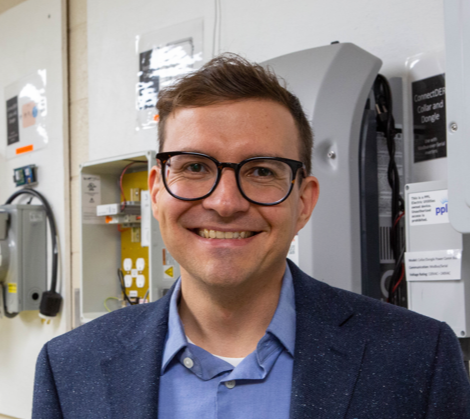GU303: DER Management: What It Is, Why It's Critical, Lessons Learned from the Industry's Most Successful (and Unsuccessful) Implementations, and How to Start Managing DER Today (Before Investing in DERMS Infrastructure)
This course presents best practices for distributed energy resource (DER) Management from today’s real-life deployments. Throughout the course, audience participation is encouraged, inviting you to share where you’re at in your journey, tailoring the experience to jumpstart your progress in achieving your DER management goals.
The course assumes no prior knowledge; there are no prerequisites. The material is designed for professionals across the industry, engineers and non-engineers alike, for utilities and the broader community.
This course is taught by a recognized leader in DER management, serving as the DER interoperability lead for the nation’s leading DER management project (managing over 10,000 DER directly from the utility control room), receiving such accolades as: SEPA Power Players - 2019 Utility of the Year; Public Utilities Fortnightly - Top Innovators of 2019; Public Utilities Fortnightly - 2020 Foremost Innovator in Distributed Generation; and SunSpec Alliance - 2024 Open Standards Champion.
In this course, we’ll explore:
- What are DER
- What issues arise as DER proliferates
- The grid support functions that help mitigate these issues
- How to manage DER to provide these functions
- The broader benefits derived from DER management
- Why DER management is critical, how you can begin managing DER today with your existing infrastructure, and how to make the business case for investments in a DER Management System (DERMS) and related infrastructure
- How are utilities doing DER management today
Specific topics we’ll cover:
- A brief overview of the history of our grid and how it’s informed the ever-evolving integration of Distributed Energy Resources (DER):
- The War of the Currents
- The rise of Samuel Insull’s Commonwealth Edison and the age of state-granted monopoly franchises
PURPA (granted DER interconnection rights), FERC Order 888 (moved power generation into meritocratic markets), FERC Order 2222 (evolving markets to provide more opportunity for DER, enabling value discovery) - DER management as a step toward averting the looming affordability crisis and “utility death spiral”
- The envisioned transactive energy future (“prices to devices”), where customers automatically receive real-time information on capacity scarcity via price signals and automatically alter behavior to arbitrage
- Lessons learned from 21st century case studies in integrating DER and how the industry responded by creating the IEEE 1547-2018 Standard, recognizing the challenges raised by an increasingly distributed grid and how DER can help address these issues with manageable grid support functionality:
- Reducing the risk of cascading blackouts with DER ‘ride-through’, setting voltage and frequency shall-trip curves similar to NERC PRC-024 for bulk electric generation. Case studies from Europe, Asia, and the US.
- Increasing hosting capacity and improving power quality by managing DER reactive power support functions, such as constant power factor, constant reactive power, and Volt-VAR. Case studies from the US.
- Further increase hosting capacity with active power management functionality (including flexible interconnection agreements), such as constant active power and Volt-Watt. Case studies from the US and Australia.
- Communication architecture for DER management
- Conceptualizing DER management as an extension of SCADA to interconnected energy resources.
- How to begin managing DER today with your existing infrastructure (crawl, walk, run).
- Communication protocols used for interacting with DER:
- SunSpec Modbus over RS485
- SunSpec Modbus over Ethernet
- IEEE 1815 (DNP3)
- IEEE 2030.5 (SEP2)
- Interaction between utility and equipment manufacturers to configure IEEE 2030.5 client (DER) to server (utility) communication
- Server and client certificate management and evolving Public Key Infrastructure (PKI)
- Communication networks used for connecting utility control rooms to DER
- Differences between direct management of DER and third-party APIs
- Conceptualizing DER management as an extension of SCADA to interconnected energy resources.
- Lessons learned across the US, including:
- How to use existing infrastructure to begin managing DER today (i.e., using a utility’s existing control systems and communication networks: AMI, cellular, etc.), allowing you to gain valuable experience that better informs future investments in DERMS software and related infrastructure
- The state of DER interoperability, including the differences between the standardized protocols and real-life implementations, and the importance of interoperability testing
- Standing up an interoperability test lab quickly at minimal cost
- Physical differences in DER communication interfaces, i.e., how to physically connect to DERs
- Communicating with single-inverter systems, multi-inverter systems, communication hubs, and plant controllers
- Non-radial networks: upgrading network protector relays to enable reverse power flow
- The potential to use the latest meters as DER management devices
- Applying these concepts to manage EV charging and other dynamic loads
)
)
)
